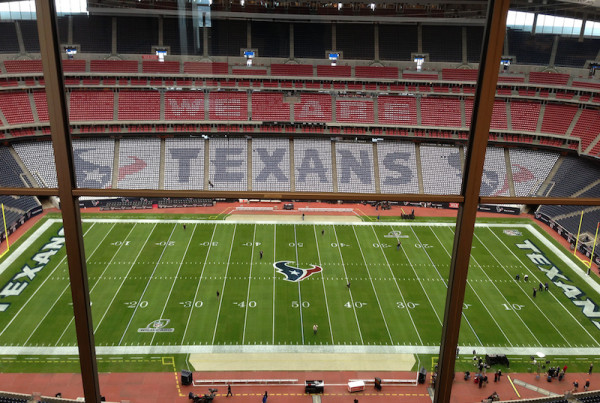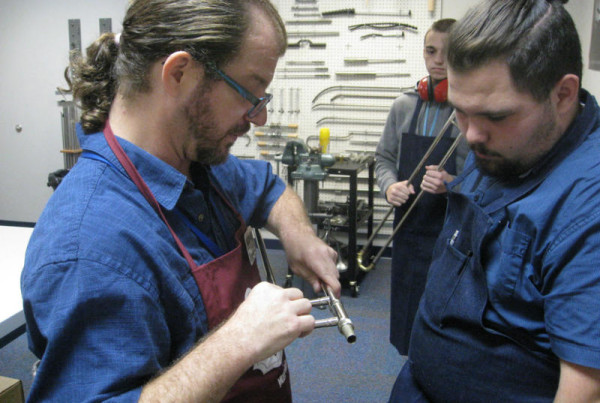This story originally appeared on KUT.
Three years ago this month, the premier racing organization in the world began its relationship with COTA, its first purpose-built facility in the United States.
But after its third F1 race this October, the honeymoon may be over.
COTA is short the $25 million sanction fee it is supposed to pay Formula One to host the race. Formula One chairman Bernie Ecclestone is giving the Austin track more time, but there is some question as to when Formula One may be paid that fee, and if they’ll ever be back.
First, a quick primer on how these guys all try to make money.
Circuit of the Americas pays Formula One a fee to host a race. Right now, that fee is roughly $25 million a year. The track had a plan to get most of that money — a rebate from the State of Texas Major Events Trust Fund, tax revenue gained from economic activity surrounding the race — theoretically not dipping into any taxpayer coffers that they didn’t help fill. A 10-year plan was approved by Governor Rick Perry and Comptroller Susan Combs, providing up to $25 million a year from the fund.
Combs talked about the track’s impact in 2012 on the SpeedCity podcast.
“When you get folks coming from across the globe, I think you have to understand, they’re bringing brand new tax dollars,” she said.
So far, COTA received $84.5 million between 2012 and 2014, but earlier this month Governor Greg Abbott announced the state was altering the way the track’s tax impact is calculated, lowering the anticipated payment from close to $25 million to $19.5 – a $5 million-plus gap that suddenly forced Bernie Ecclestone to make cautionary remarks about F1’s future here.
COTA chairman Bobby Epstein says the business arrangement with F1 is “like the movies.”
“We get tickets and popcorn. We get concessions, some of the ticket revenue and parking.”
But that’s where the similarities end.
“What’s unusual is, as a circuit, we don’t have advertising rights. Every sponsor you see when you come out along the track, that’s all F1’s. This is their property for two weeks. You build it for them. The paddock club, which are the highest dollar tickets at several thousand dollars a ticket, that’s a hundred percent their revenue. That’s the bulk of your revenue. So, you may look like a really big business and a really big company, but you’re really a small business that has a big impact.”
In addition to the metaphorical storm clouds over COTA, there were actual storm clouds bringing a ton of rain to this year’s race, draining COTA’s wallet even more.
“The weather made for a fantastic race. So if you’re a racing fan or an F1 fan, it made for the best race in what they say is more than a decade, but from a revenue standpoint — concession stand revenue is down millions of dollars. We had to take last-minute action to try and get every bus we could get. So you add hundreds of thousands of additional costs for those buses and for backup planning,” Epstein says.
In order to see how Formula One might end in Austin, it might be helpful to look at how Ecclestone has ended his other American trysts. U.S. cities of all sizes have been smitten with Formula One. Las Vegas, Detroit and Dallas have hosted F1 races; all eventually failed. Austin’s event isn’t even the first U.S. Grand Prix: Races were held in Sebring, Florida in 1959; Riverside, California in 1960; Watkins Glen, New York from ’61 to 1980; Phoenix from ’89 to ’91; and Indianapolis from 2000 to 2007.
Curt Cavin, racing columnist with the Indianapolis Star, recalls F1’s temporary stint at the city’s Motor Speedway.
“As has been the case in a lot of markets, Bernie Ecclestone priced out Indianapolis Motor Speedway, which wasn’t receiving state and local money,” Cavin says. “It was trying to fund it on its own based on the merits of selling tickets and sponsorship. Sponsorship was going away, and Formula One had a disastrous race in its final appearance, and it just became a sense of, you couldn’t sustain the economics that Bernie wanted to continue with.”
And he adds this may be just the beginning of Ecclestone’s arm-twisting.
“Whether it’s this year or next year or three years from now, eventually there is going to be a gap too wide to meet. Bernie is not going to go down with his sanctioning fee, and I would suspect that the state is not going too far up with its sanctioning fee. So, as is the case with most Formula One venues, it’s only a matter of time before it moves on,” Cavin says.
But Epstein says he doesn’t fault Ecclestone.
“Bernie doesn’t own Formula One anymore. He has a very small percent, just as Texas Teachers has a small percent. The main owners are CVC, a large investment fund, and Waddell & Reed. He now has shareholders and investors to be beholden to. When they say drive the bottom line, he’s the guy they say that to,” Epstein says.
So, it’s not just Ecclestone that COTA is shorting; Texas teachers also have skin in this game – or, race. Texas Teachers Retirement System invested $200 million in the F1 parent company back in 2012. Last year, that investment earned Texas TRS a $25 million dividend check.
As for how this all ends, even those closest to the matter don’t seem to have an answer. Ecclestone is giving COTA more time to come up with his fee. He’s made public comments that he’s not worried about Austin’s future in his sport, but he insists the drop in state funding isn’t his problem.
For now, Epstein remains unsure. “I don’t think we have the answer. That’s why I think we look a little beaten up and tired: We don’t know the outcome yet.”

















